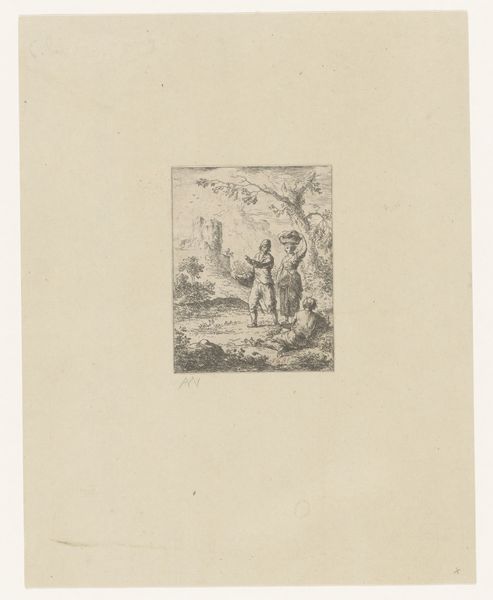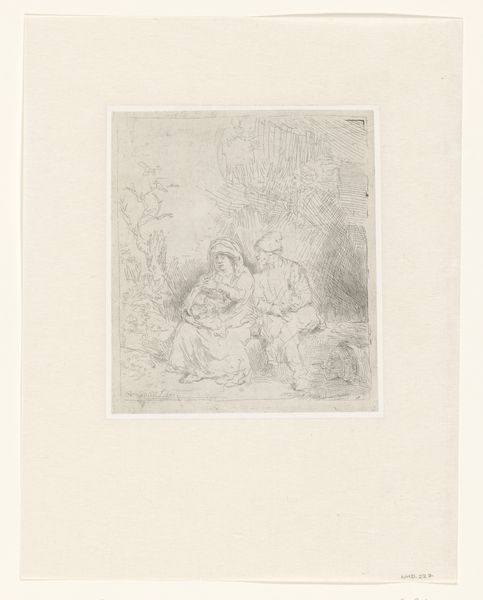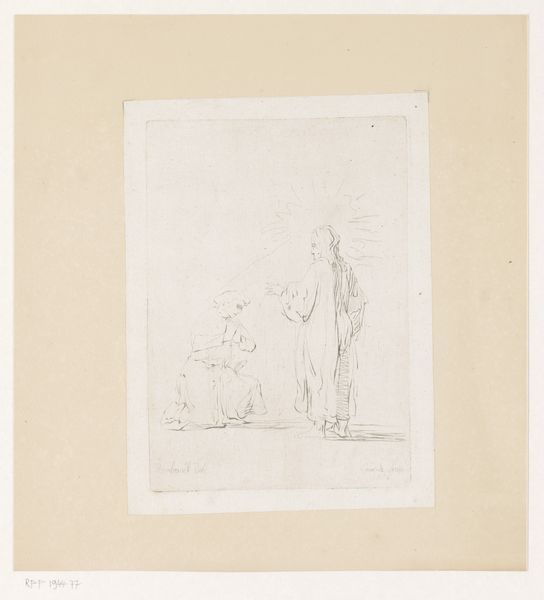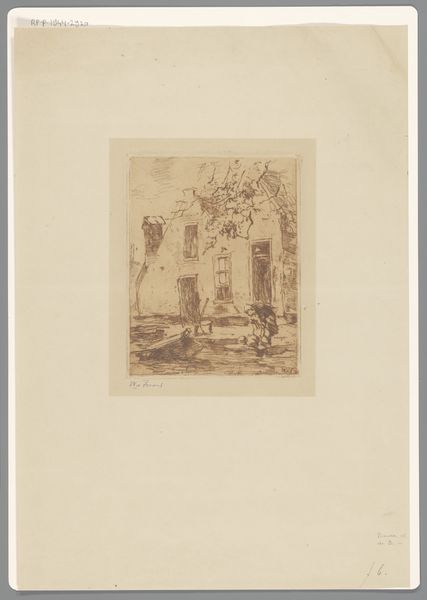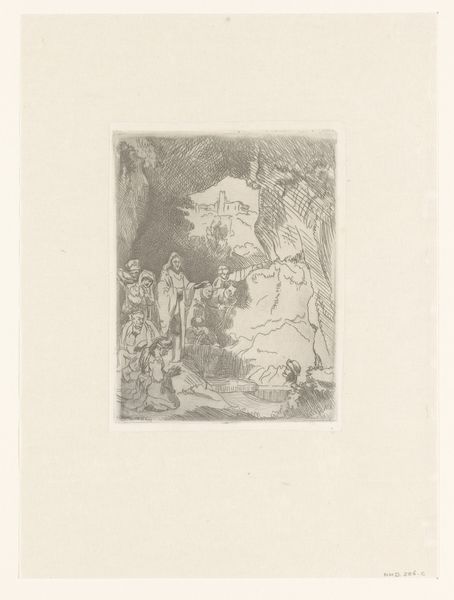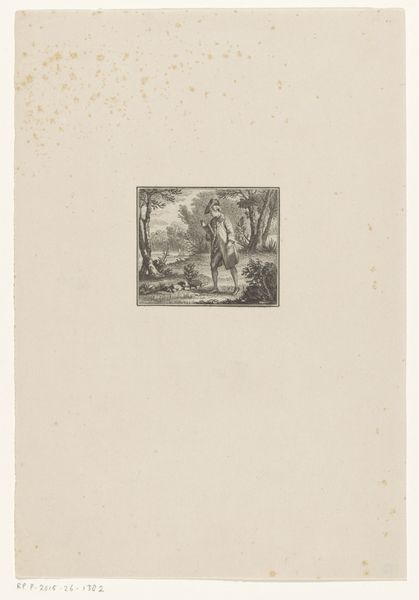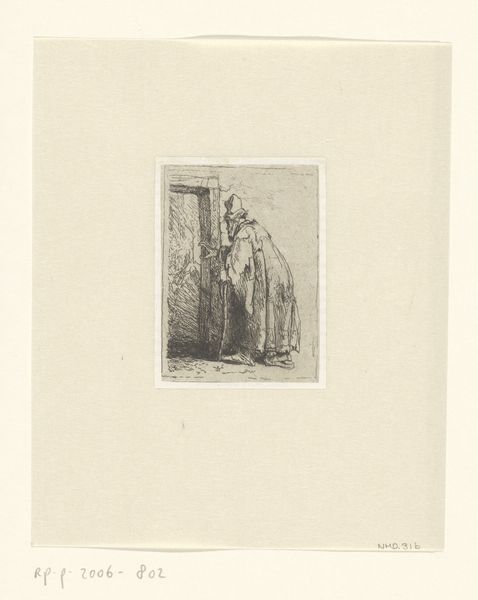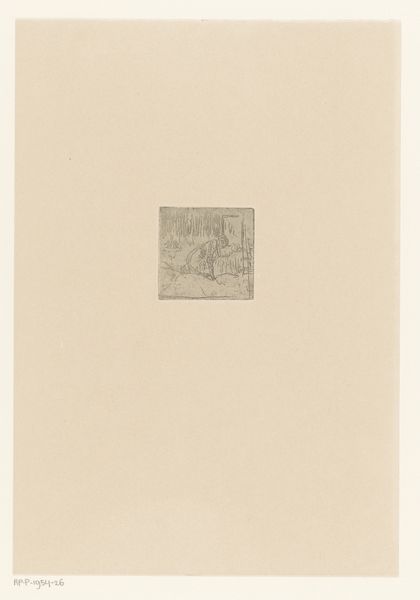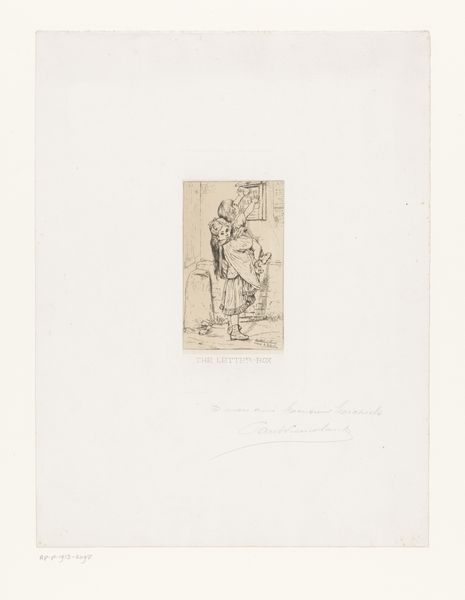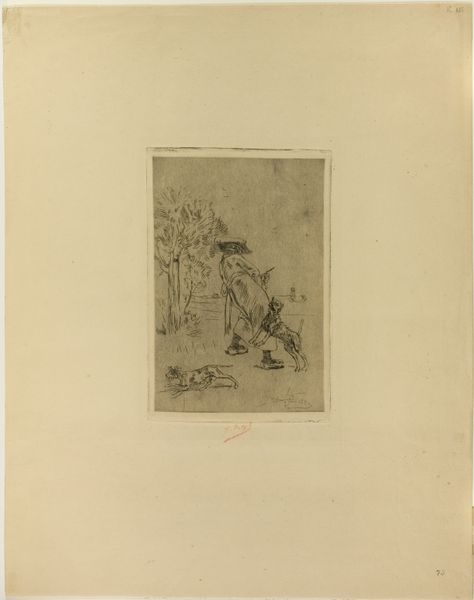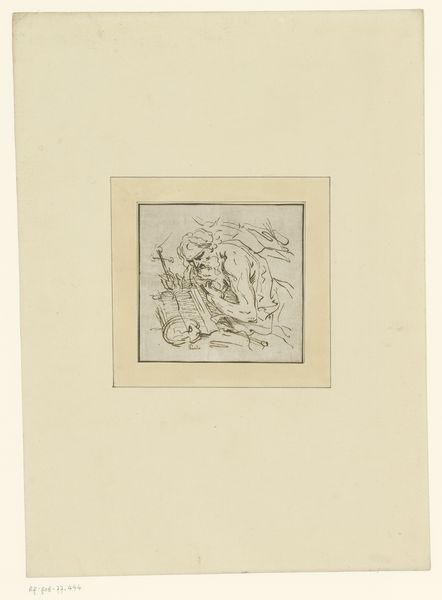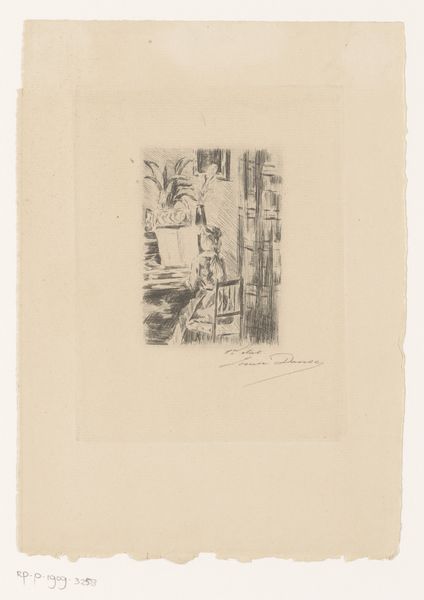
drawing, sculpture, engraving, architecture
#
drawing
#
baroque
#
landscape
#
form
#
sculpture
#
line
#
cityscape
#
history-painting
#
engraving
#
architecture
#
realism
Dimensions: height 99 mm, width 91 mm
Copyright: Rijks Museum: Open Domain
Curator: This drawing is called "Romeins standbeeld en ruïnes," or "Roman Statue and Ruins" in English. It's by Jan Linsen, dating to around 1630. Editor: My first impression is melancholy. Look at the light, and those delicate lines suggesting decay and the passage of time. There's a ghostliness to it. Curator: Linsen was working during the Baroque period, and while known more for history paintings, this drawing reflects the ongoing interest in antiquity. It offers a glimpse into how Rome was perceived and documented by artists visiting or living there. Note the meticulous detail in capturing both the grand statue and the dilapidated state of the ruins. Editor: The human figures near the statue make you think of tourists, but also hint that someone, perhaps the artist, saw past the disrepair. I see this grand narrative meeting simple, everyday existence, right? It feels very theatrical! Curator: That intersection is significant. Rome had a very real place as an early tourist destination, but was simultaneously undergoing renewed attention by Papal artistic commissions at the time. We can also read it as commentary on power, specifically the temporality of it. Linsen emphasizes that even powerful empires fade, only remnants remain. Editor: A sort of “memento mori” in stone, then! It's subtle, but that decay speaks louder than the classical statue itself, which somehow only looks like a set piece rather than a statement. And what do we learn when we recognize that the backdrop outlives the hero? It almost sounds…optimistic? Curator: It underscores that institutions come and go, while artistic themes continue to resonate across history and through different societies and styles. Editor: Indeed. "Roman Statue and Ruins" by Linsen may seem simple, but its elegance tells a multifaceted tale. Curator: Ultimately, the work demonstrates how an interest in ruins was essential in the period, offering a lens through which the past continues to inform the present.
Comments
No comments
Be the first to comment and join the conversation on the ultimate creative platform.
